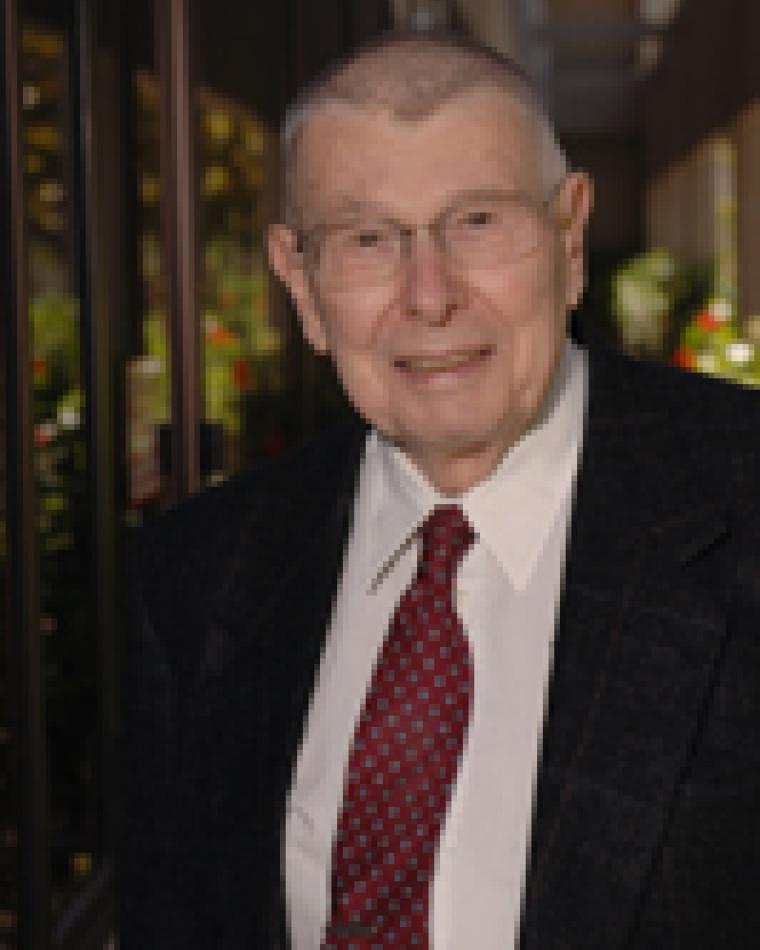
Leonard Cutler
Leonard Cutler
Contact Menu
Leonard S. Cutler – Atomic Clock Scientist, Engineer and Innovator 1928 – 2006 The time and frequency community lost one of its most prominent members when Len Cutler passed away, at age 78, on September 4, 2006, while camping with his wife in Big Basin Redwoods State Park in California, USA. His loss marks the end of an illustrious career that led to pioneering contributions over the past forty-nine years in the field of ultra-precise timekeeping standards, devices, and measurement technologies. Len earned his BS (1958), MS (1960), and PHD (1966) in Physics from Stanford University while working at neighboring Hewlett-Packard Laboratories. Len’s early work at HP was concentrated on the development of oscillators and atomic frequency standards and clocks. The first atomic clock was invented in 1948. In the early 1960s, HP started a program to design a cesium clock for commercial purposes. In 1964, Cutler and his colleague Al Bagley succeeded inventing the HP5060A Cesium Beam Atomic Clock. This was the first all-solid-state cesium-beam chronometer, whose output frequency was soon adopted as the world time standard by the US National Institute of Standards and Technology and other scientific centers around the world. Cutler’s 1964 clock coordinated international time to within a microsecond, whereas previous efforts had pared accuracy down to only a millisecond. Cutler continued refining both the design and the constituent parts of cesium clocks, as well as research in quantum mechanics. His most recent triumph, in 1991, was the HP 5071A: at twice the accuracy of its predecessor, it remains the world’s most accurate commercial clock, losing about one second every 1.6 million years. HP 5071As also account for 82% of the data relied on to keep the International Atomic Time Standard (as of 2006). Len’s contributions to the development of commercial cesium standards culminated in the development of HP’s “super tube” which incorporated many innovations to sense and correct for the influence of environmental perturbations on the clock. After the spin-off of Agilent Technologies from HP, Len became a part of Agilent Laboratories, becoming its first (and only, as of Len’s death in 2006) Agilent Distinguished Fellow. In the last few years, Len had concentrated on the study and designs related to the chip scale atomic clock and as a general consultant to Agilent Laboratories.
Not surprisingly, Len had numerous patents for various atomic devices. But he also had other patents in such diverse fields as quartz oscillators and the two-frequency laser interferometer, which has become an essential element of integrated circuit manufacturing. Leonard S. Cutler was well known and respected in the US and abroad as an authority on atomic clocks, oscillators, and timekeeping. His many honors include election to IEEE Fellow in 1978 (“For contributions to the design of atomic frequency standards and to the theory and measurement of frequency stability”), the IEEE’s Morris E. Leeds Award and Centennial Award (1984), election to the National Academy of Engineering (1987),recipient of the American Institute of Physics’ Industrial Applications of Physics Award (1993), the IEEE Rabi Award (1989, For consistent technical and managerial contributions to the development of atomic cesium, rubidium and mercury ion frequency standards), and in 1990, Cutler became HP’s first Distinguished Contributor. He was elected a Fellow of the American Physical Society in 1996, and received the IEEE Third Millennium Medal in 2000. He served on the Technical Program Committee of the IEEE Frequency Control Symposium for 32 years (1974-2006).
Len is survived by his wife, Dorothy; four sons, Jeff, Greg, Steve and Scott; a brother, Fred; a sister, Anita Roth; and four grandchildren.
- 1989 I. I. Rabi Award
- 1974 IEEE Fellow
